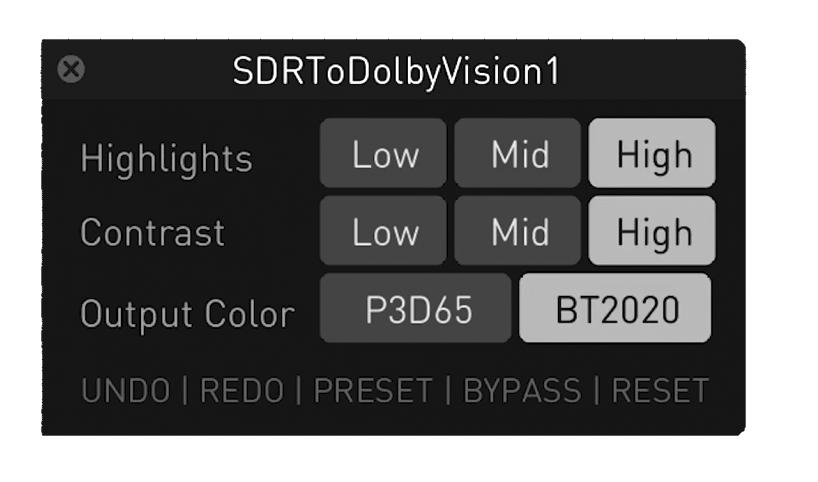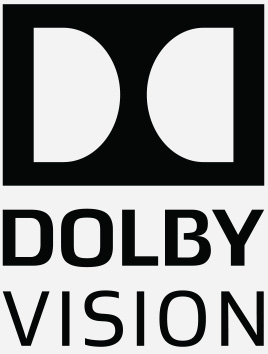Advanced color volume remapping tools using the Human Perceptual Model for multiple display mastering maintaining the original creative intent
The Colorfront SDR to Dolby Vision tool is used to upmap original SDR content to Dolby Vision HDR. It leverages the original Colorfront Engine with special modifications to ensure a roundtrip match between the original SDR and the Dolby-derived SDR.
Colorfront Engine is a state-of-the-art parametric color processing pipeline mapping various input formats, including camera original (scene-referred) and graded (display-referred) images, to a wide range of SDR and HDR output formats at user definable brightness levels and gamuts while maintaining the creative intent.
With a perceptually optimized color volume remapping technology, Colorfront Engine is designed to preserve the original creative intent when converting between numerous original camera and delivery formats, no matter what the color space, brightness level, or dynamic range is.
- Mapping from various camera native log formats to multiple concurrent HDR / SDR outputs
- SDR preview on HDR monitors allows instantaneous previewing of SDR / HDR on a single HDR display, without changing settings
- HDR to SDR down conversions facilitating single master workflows
- SDR to HDR up conversions allowing the integration of legacy SDR content into HDR workflows
- Remapping between various HDR and SDR nit levels
- Remapping between standard and wide color gamuts, including BT.709, BT.2020, P3 and ACES
- Converting between various resolutions, including 8K, 4K, UHD, HD, SD
Adopting a human perceptual model to ensure that the creative intent is maintained is an effective and the only adequate method that can handle the wide range of gamuts and brightness levels while preserving a consistent look across all of the abundant number of display targets in today’s growing technological world.
The Colorfront Engine is an implementation of a perceptual color processing pipeline that meets the requirements listed above. This technology is currently available in different software and hardware products such as AJA’s FS-HDR and HDR Image Analyzer, as well as in all Colorfront dailies and mastering products. Colorfront’s state-of-the-art color processing Engine brings true plug-and-play simplicity, as well as a convenient and supreme solution to today’s complex multi-source, multi-deliverable production needs.
First popularized by AJA’s FS-HDR, the new AJA ColorBox offers HDR/WCG capabilities leverage video and color space processing algorithms within the Colorfront Engine – licensed by AJA from Colorfront,
Built-in SDR, HLG, and PQ transforms are optimized and designed for HDR broadcast that maintain perceptual integrity.
See the Application notes on Using Colorfront Engine in Vantage.
PRESERVING THE CREATIVE INTENT
What do we mean about preserving the creative intent? The creation of images starts with capturing some source footage. The source footage then goes through various transforms and is finally put up on what we call a reference master display. This is a very important concept because this is the hero image. This image is exactly what we want all deliveries to look like, no matter whether they are viewed in a brighter or darker environment, or whether the peak brightness matches the current cinema level, or if it is a much brighter HDR experience at 1000 nits or above. The looks need to be maintained across all of these without having to adjust each one of them. Looking at a mastering display and creating a reference image can be done in multiple stages of the workflow, from starting on-set to all of the way through post-production. In our industry, we want the “look” to be accurately maintained and to travel with the project from end to end.
There are many requirements and challenges of applying a color processing pipeline when mastering for multiple displays and various surround brightness levels. The following questions should be carefully considered when choosing a color processing pipeline for a mastering/delivery workflow:
- Does it support the common master workflow?
- Does it handle both SDR to HDR, and HDR to SDR?
- Does it support camera original and graded sources?
- Is it based on LUTs created with creative grading tools?
- Do they break with images pushing the color boundaries?
- Does it support various input and output nit levels?
- Does it support different output color spaces with gamut constraints?
- Does it support various ambient surround conditions?
- Will SDR look the same as HDR? Is the look of the image maintained?
Features
DOLBY VISION ROUNDTRIPPING
Utilizing Dolby Vision allows creators to deliver a single master file that integrates Dolby Vision, HDR, and SDR formats, ensuring optimal quality across 10 or 12-bit signals for consumer TVs. This technique effectively combats the conversion of SDR content into unsatisfactory stretched pseudo-HDR on modern displays.
| Colorfront’s SDR2DolbyVision produces a premium HDR viewing experience, while maintaining an accurate match between the original SDR master and the one derived with the Dolby Content Mapping Unit using custom generated SMPTE ST-2094 Dolby Vision Metadata. This powerful toolset not only future-proofs SDR content but also maintains the creative essence in the Dolby Vision HDR format. |  |
The HPA Engineering Excellence Award-winning Colorfront Engine now allows users to seamlessly upgrade extensive SDR content libraries to the Dolby Vision HDR format, addressing the surge in HDR-ready displays and devices with a straightforward, time-efficient, and cost-effective solution.
 |
This conversion process not only transitions SDR to visually stunning Dolby Vision HDR but also produces unique Dolby Vision metadata, guaranteeing that the Dolby-derived SDR output visually matches the original SDR content. This innovative roundtripping method presents a unified, streamlined, single-source workflow for mastering and distribution. |
COLORFRONT ENGINE SDK
 |
The modular color processing functions underneath all of the above implementations are available in a software development-kit (SDK) for partners to implement. By applying a relevant subset of functions, various solutions can be designed for specific color processing problems.
Colorfront Engine is now available as a simple to integrate, lightweight C++ SDK on Windows, OSX, iOS and Linux. Depending on the intended usecase the host application may expose a limited set of parameters, or the full range of controls. The highly optimized 32-bit floating point processing engine to minimize processing cycles can be easily multi-threaded. |

The Colorfront Engine is an implementation of a perceptual color processing pipeline that meets the requirements listed above. This technology is currently available in different software and hardware products such as AJA’s FS-HDR and HDR Image Analyzer, as well as in all Colorfront dailies and mastering products. Colorfront’s state-of-the-art color processing Engine brings true plug-and-play simplicity, as well as a convenient and supreme solution to today’s complex multi-source, multi-deliverable production needs.
COLORFRONT ENGINE WINS HPA ENGINEERING EXCELLENCE AWARD
“Judging criteria for the technology include the following: uniqueness, significant contribution to the industry at this time, excellence, outstanding implementation, design and utility, offers a path to continued industry progress, represents an achievement that allows for increased efficiency or creativity, and streamlines or enhances current processes.2017 HPA Engineering Excellence Awards” |
 |
COLORFRONT ENGINE WHITEPAPER
|
[new] Colorfront Engine Whitepaper by Colorfront CTO Bill Feightner Maintaining a consistent, creative look across today’s rapidly growing field of new display technologies for television, cinema, and portable devices is an immsense challenge. This is especially true when considering the wide disparity in possible brightness, contrast, and viewing environments. The traditional show LUT based approach of a dedicated finish for each possible combination is not practical. Even if that approach were taken, maintaining creative consistency would be, at best, extremely difficult. Colorfront Engine is based on the extensive knowledge of how our eyes see light, and uses an internal processing color space where the perceived color and tonal relationships are preserved. |


 2.1 MB
2.1 MB
 |
|